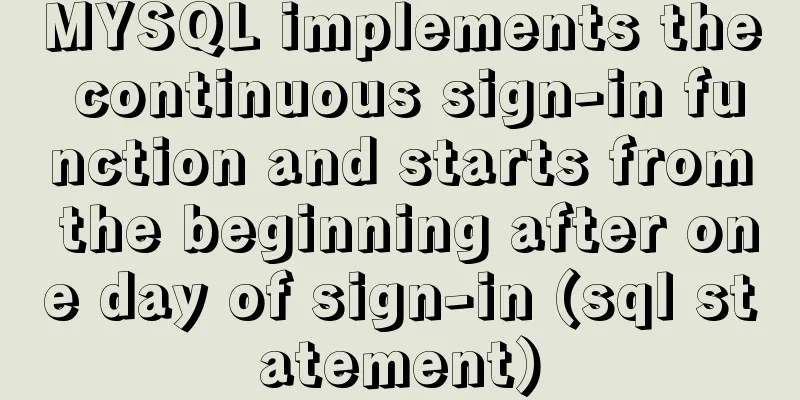Application examples of WeChat applet virtual list

PrefaceThere are more than 4,000 popular stock lists, which need to be rendered on the page and updated in real time during trading. If interfaces and paging are used, the page will become more and more stuck when scrolling down dozens of pages and must be updated in real time. The final approach is to pass the data from ws at the beginning. We only need to pass the starting and ending subscripts, and we only generate a few tags on the page. Greatly reduces rendering pressure. What is a virtual list?
It only refers to rendering the labels in the visible area, constantly switching the start and end subscripts to update the view when scrolling, and calculating the offset at the same time. Demo effect
Preparation
Screen height & box heightIn the applet we can use wx.createSelectorQuery to get the screen height and the box height.
getEleInfo(ele) {
return new Promise( ( resolve, reject ) => {
const query = wx.createSelectorQuery().in(this);
query.select(ele).boundingClientRect();
query.selectViewport().scrollOffset();
query.exec( res => {
resolve(res);
})
})
},
this.getEleInfo('.stock').then( res => {
if (!res[0]) return;
// Screen height this.screenHeight = res[1].scrollHeight;
//Box height this.boxhigh = res[0].height;
})
Start & End & Offset
onPageScroll(e) {
let { scrollTop } = e;
this.start = Math.floor(scrollTop / this.boxhigh);
this.end = this.start + this.visibleCount;
this.offsetY = this.start * this.boxhigh;
}
scrollTop can be understood as how many boxes have been scrolled from the top / the height of the box = the starting subscript Start + How many boxes can be displayed in the visible area of the page = End Start * Box Height = Offset
computed: {
visibleData() {
return this.data.slice(this.start, Math.min(this.end, this.data.length))
},
}
When start and end change, we will use slice(this.start, this.end) to change the data, so that the content of the label can be replaced in time. optimizationWhen scrolling quickly, a blank area will appear at the bottom because the data has not been loaded yet. We can render three screens to ensure that the data is loaded in a timely manner when sliding.
prevCount() {
return Math.min(this.start, this.visibleCount);
},
nextCount() {
return Math.min(this.visibleCount, this.data.length - this.end);
},
visibleData() {
let start = this.start - this.prevCount,
end = this.end + this.nextCount;
return this.data.slice(start, Math.min(end, this.data.length))
},
If you have calculated the front screen reserved offset, you need to modify it as follows: this.offsetY = this.start * this.boxhigh - this.boxhigh * this.prevCount When sliding, start, end, and offsetY are constantly changing. Frequent calls to setData may cause the applet to exceed memory and crash. Here we throttle when sliding to dilute the execution frequency of setData.
mounted() {
this.deliquate = this.throttle(this.changeDeliquate, 130)
},
methods: {
throttle(fn, time) {
var previous = 0;
return function(scrollTop) {
let now = Date.now();
if ( now - previous > time ) {
fn(scrollTop)
previous = now;
}
}
},
changeDeliquate(scrollTop) {
this.start = Math.floor(scrollTop / this.boxhigh);
this.end = this.start + this.visibleCount;
this.offsetY = this.start * this.boxhigh;
console.log('Execute setData')
}
},
onPageScroll(e) {
let { scrollTop } = e;
console.log('Scroll =================>>>>>>>')
this.deliquate(scrollTop);
}
As can be seen from the above figure, each scroll reduces the writing of setData by at least two times. The demo written in the article is here, you can refer to it if you need it. SummarizeThis is the end of this article about the WeChat mini-program virtual list application. For more relevant mini-program virtual list content, please search for previous articles on 123WORDPRESS.COM or continue to browse the related articles below. I hope everyone will support 123WORDPRESS.COM in the future! You may also be interested in:
|
<<: Introduction to building a DNS server under centos7
>>: Tutorial on how to modify element.style inline styles
Recommend
HTML+CSS3 code to realize the animation effect of the solar system planets
Make an animation of the eight planets in the sol...
js method to delete a field in an object
This article mainly introduces the implementation...
Detailed explanation of how to configure the tomcat external server in HBuilderX to view and edit the jsp interface
1. The first method is to start the local tomcat ...
Implementing circular scrolling list function based on Vue
Note: You need to give the parent container a hei...
How to install JDK and Mysql on Ubuntu 18.04 Linux system
Platform deployment 1. Install JDK step1. Downloa...
js to implement verification code interference (dynamic)
This article example shares the specific code of ...
Practice of using SuperMap in Vue
Table of contents Preface Related Materials Vue p...
Detailed explanation of Vue's front-end system and front-end and back-end separation
Table of contents Overview Front-end knowledge sy...
Common methods and problems of Docker cleaning
If you use docker for large-scale development but...
Comparison of div and span in HTML_PowerNode Java Academy
1. <div></div> and <span></s...
How to Learn Algorithmic Complexity with JavaScript
Table of contents Overview What is Big O notation...
Solve the problem of running hello-world after docker installation
Installed Docker V1.13.1 on centos7.3 using yum B...
Use of nginx custom variables and built-in predefined variables
Overview Nginx can use variables to simplify conf...
mysql5.6.zip format compressed version installation graphic tutorial
Preface: MySQL is a relational database managemen...
Use nginx + secondary domain name + https support
Step 1: Add a secondary domain name to the Alibab...












